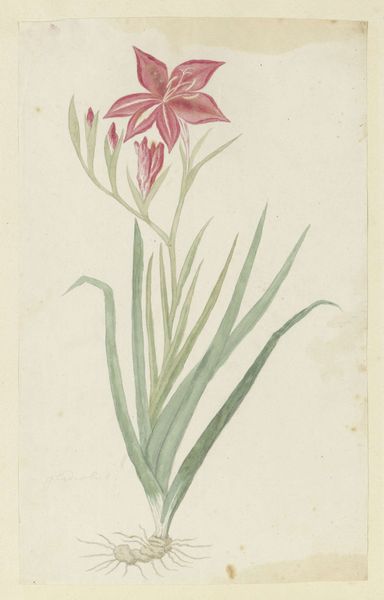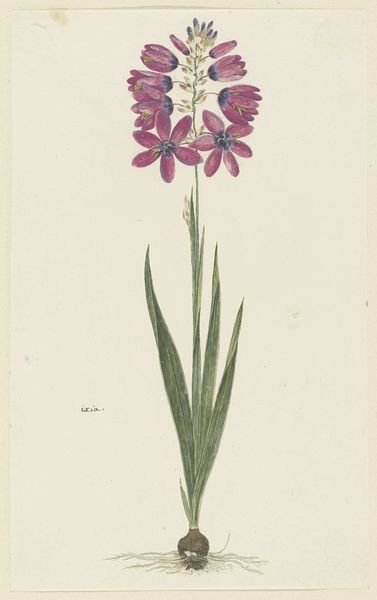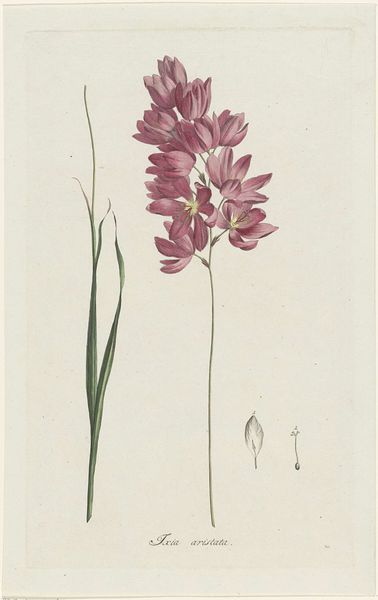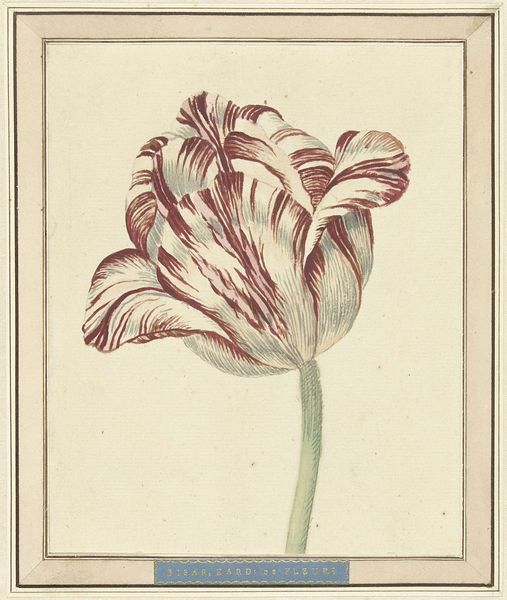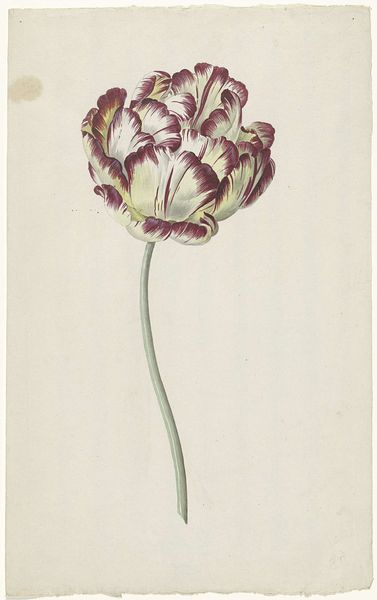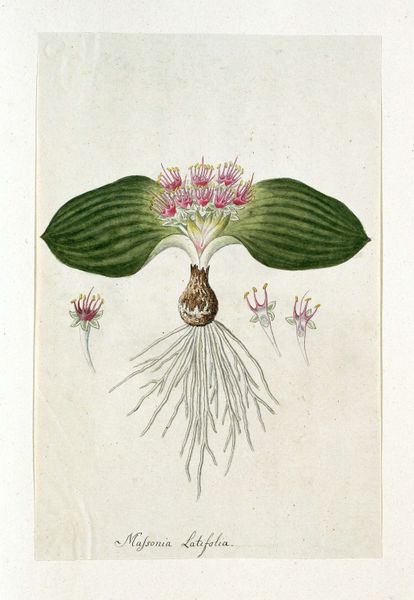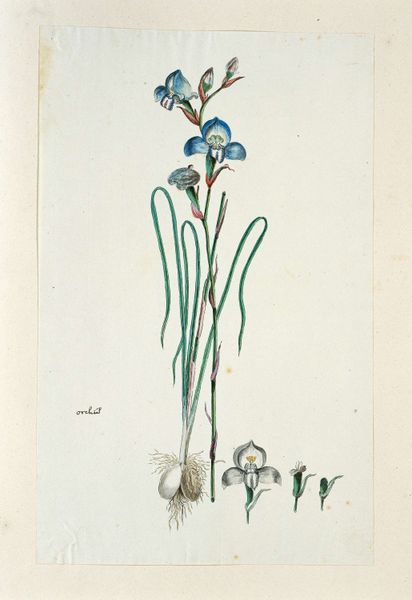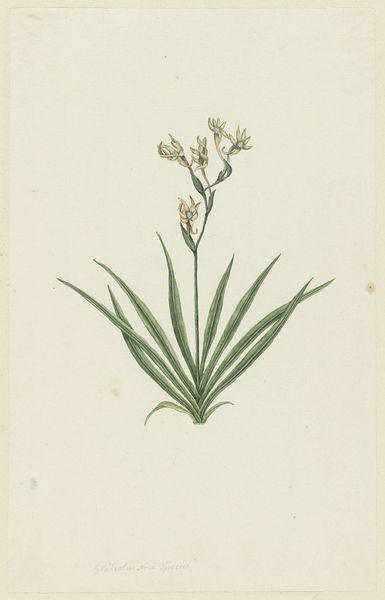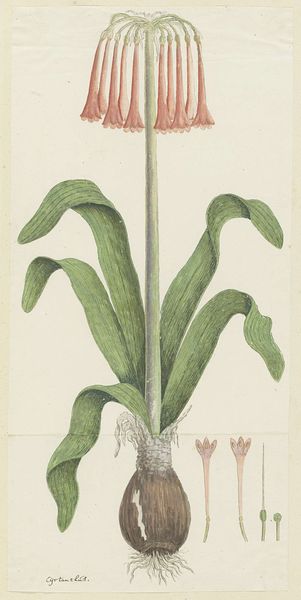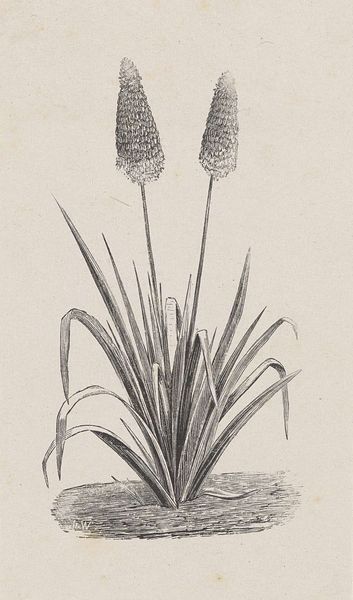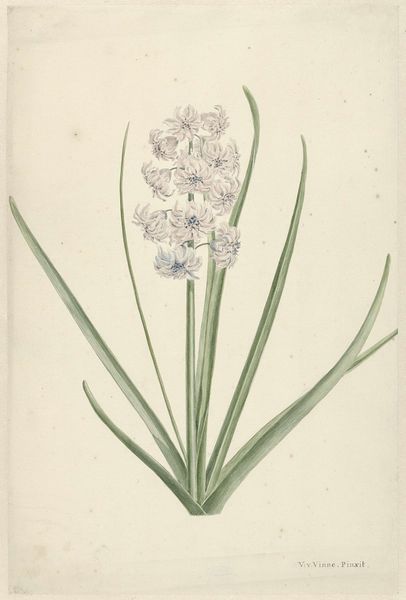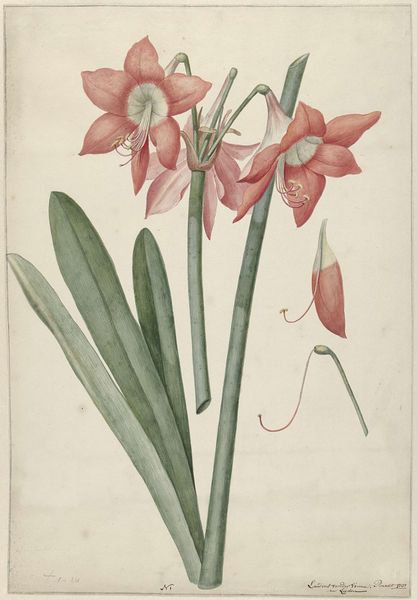
Dimensions: height 660 mm, width 480 mm, height 325 mm, width 203 mm, height mm, width mm
Copyright: Rijks Museum: Open Domain
Editor: This watercolor drawing from the late 1700s is titled "Nerine humilis (Jacq.) Herb. (Amaryllis humilis)" and is attributed to Robert Jacob Gordon. I find the plant's bulbous base and almost architectural, radial symmetry quite striking. How would you interpret this botanical illustration, particularly given the period it was created? Curator: This piece, like many botanical illustrations of the late 18th century, exists at the intersection of scientific exploration and artistic representation. Consider the context: European powers were expanding their empires, and documenting flora and fauna from newly ‘discovered’ lands was crucial. How might this botanical art reflect or even contribute to the colonial project? Editor: That's fascinating. I hadn't considered the political dimensions. So, the artist wasn't just trying to capture beauty but also contributing to a broader system of knowledge gathering and control? Curator: Precisely. These illustrations were often commissioned by wealthy patrons or scientific institutions eager to catalog resources. Notice the meticulous detail – almost like a scientific inventory. Ask yourself: whose perspective is privileged in this representation? Whose interests does it serve? Editor: That really changes how I see it. It’s not just a pretty picture of a flower; it's evidence of a particular moment in history, shaped by power and exploration. What do you think about the flower's original habitat and how it was removed and classified within Europe? Curator: Indeed. By examining the circumstances of its creation and reception, we gain a deeper understanding of the intertwined roles of art, science, and colonial power. A single image holds more than just botanical information. It offers a window into the socio-political dynamics of the time. Editor: This makes me think differently about art. It shows that there is more behind art and helps understand how colonialism has shaped the current reception of art. Thanks for helping me look at it from that viewpoint! Curator: My pleasure!
Comments
No comments
Be the first to comment and join the conversation on the ultimate creative platform.
